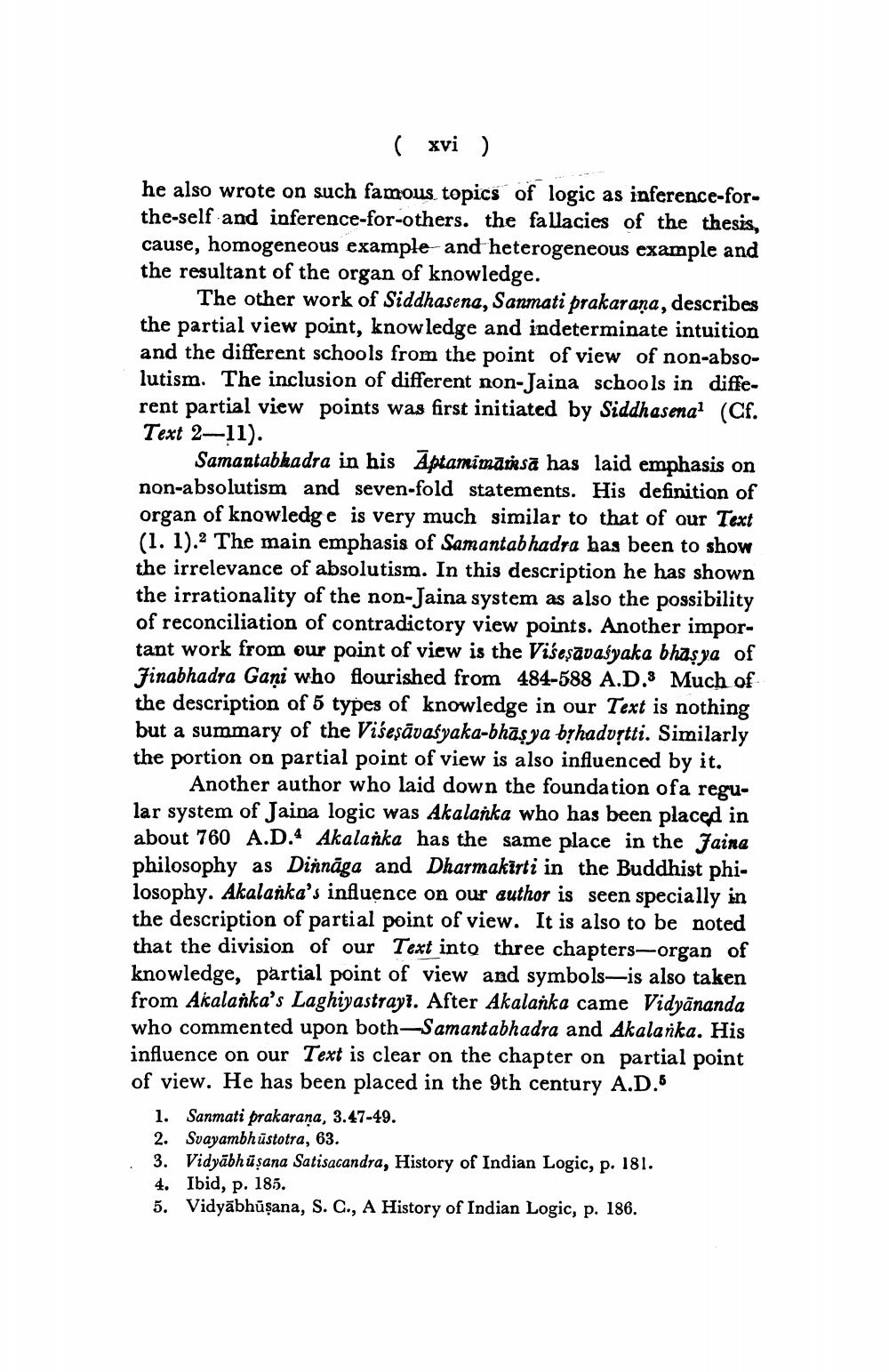________________
( xvi)
he also wrote on such famous topics of logic as inference-forthe-self and inference-for-others. the fallacies of the thesis, cause, homogeneous example and heterogeneous example and the resultant of the organ of knowledge.
The other work of Siddhasena, Sanmati prakaraṇa, describes the partial view point, knowledge and indeterminate intuition and the different schools from the point of view of non-absolutism. The inclusion of different non-Jaina schools in different partial view points was first initiated by Siddhasena1 (Cf. Text 2-11).
Samantabhadra in his Aptamimamsa has laid emphasis on non-absolutism and seven-fold statements. His definition of organ of knowledge is very much similar to that of our Text (1. 1).2 The main emphasis of Samantabhadra has been to show the irrelevance of absolutism. In this description he has shown the irrationality of the non-Jaina system as also the possibility of reconciliation of contradictory view points. Another important work from our point of view is the Viseṣāvasyaka bhasya of Jinabhadra Gani who flourished from 484-588 A.D. Much of the description of 5 types of knowledge in our Text is nothing but a summary of the Visesavasyaka-bhāṣya bṛhadvṛtti. Similarly the portion on partial point of view is also influenced by it.
Another author who laid down the foundation ofa regular system of Jaina logic was Akalanka who has been placed in about 760 A.D. Akalanka has the same place in the Jaina philosophy as Dinnaga and Dharmakirti in the Buddhist philosophy. Akalanka's influence on our author is seen specially in the description of partial point of view. It is also to be noted that the division of our Text into three chapters-organ of knowledge, partial point of view and symbols-is also taken from Akalanka's Laghiyastray. After Akalanka came Vidyananda who commented upon both-Samantabhadra and Akalanka. His influence on our Text is clear on the chapter on partial point of view. He has been placed in the 9th century A.D.5
1. Sanmati prakaraṇa, 3.47-49.
2. Svayambhustotra, 63.
3. Vidyabhüşana Satisacandra, History of Indian Logic, p. 181. 4. Ibid, p. 185.
5. Vidyabhuṣana, S. C., A History of Indian Logic, p. 186.




